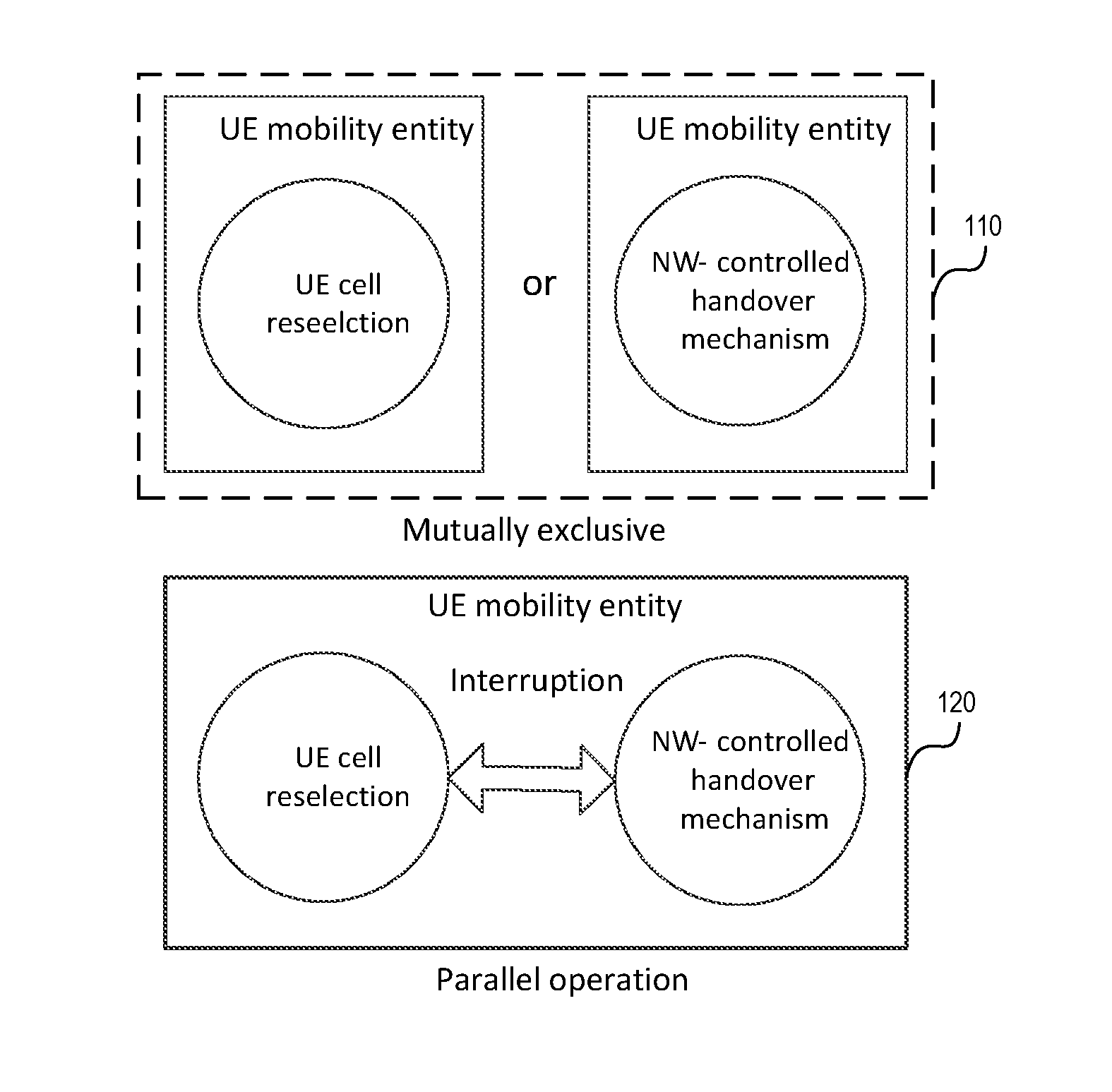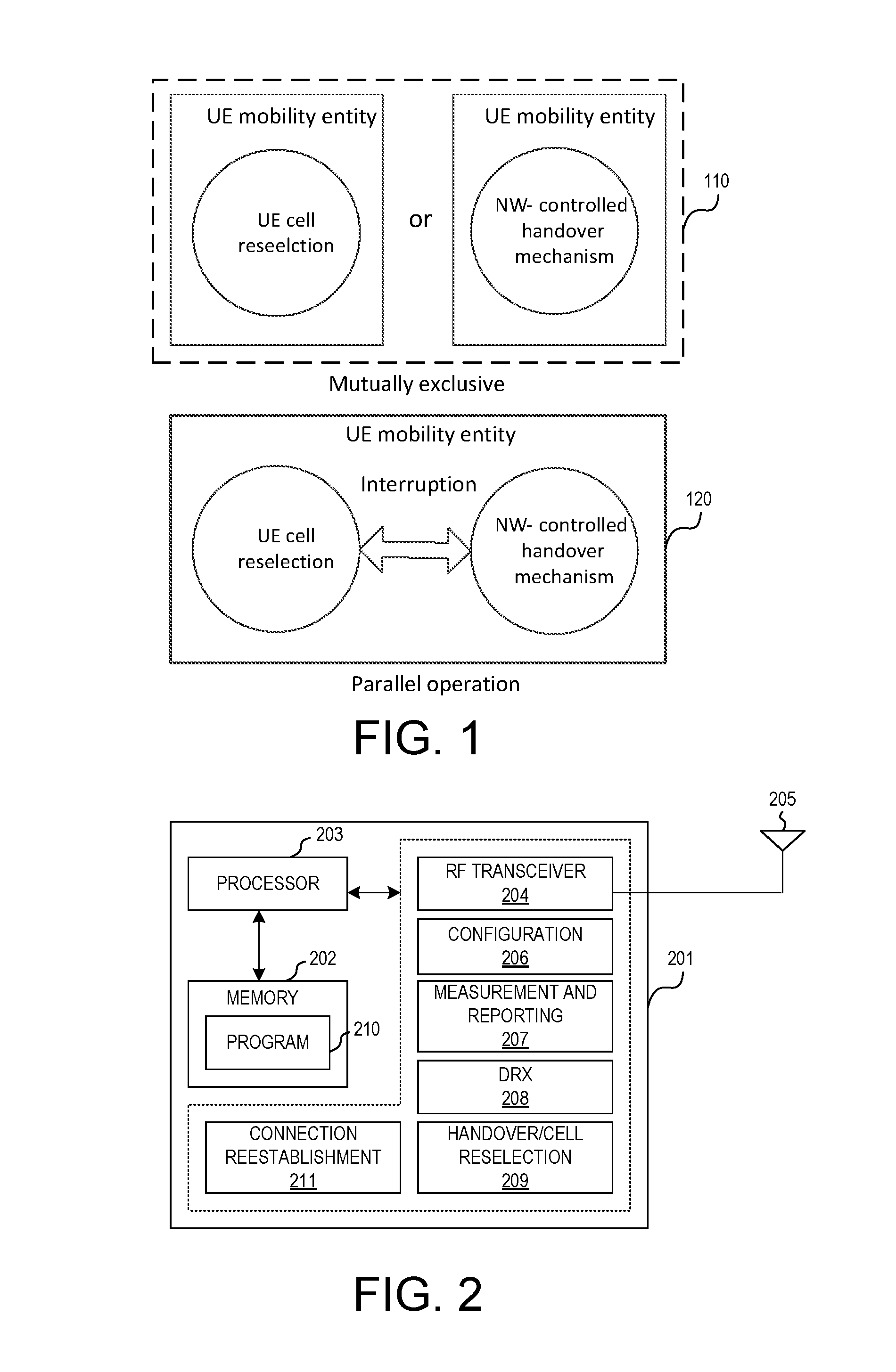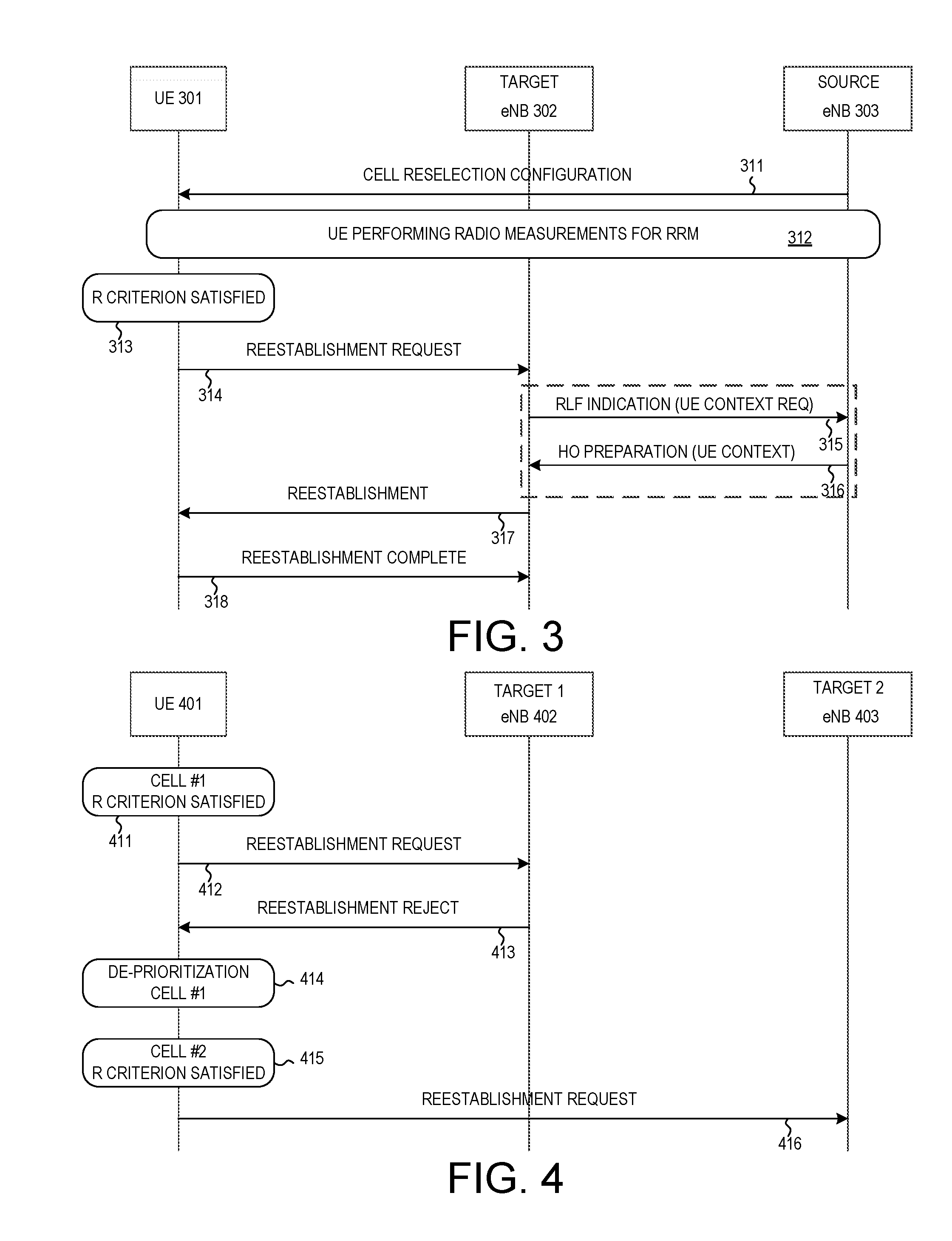Method of High-efficiency Connected Mode Cell Re-selection
a mode cell and high-efficiency technology, applied in the field of wireless communication systems, can solve the problems of drx extension, handover failure (hof) or radio link failure (rlf), measurement may drain the ue battery power, and achieve the effect of avoiding handover failure due to failed signaling in the source cell, improving signal quality, and improving mobility performance of user equipmen
- Summary
- Abstract
- Description
- Claims
- Application Information
AI Technical Summary
Benefits of technology
Problems solved by technology
Method used
Image
Examples
first embodiment
[0038]FIG. 5A illustrates UE receiving and processing configuration information from the network for connected mode cell reselection. In step 511, a UE receives cell reselection parameters for Idle mode. In step 512, the UE receives specific cell reselection parameters for connected mode. In step 513, the UE combines cell reselection parameters for Idle and connected mode. In step 514, the UE uses the combined parameter set to do cell reselection in connected mode, at least intra-frequency and inter-frequency. The nature of the configuration parameters depends on the nature of the connected mode cell reselection. One straightforward way is that the cell reselection in connected mode works in the same way as cell reselection in Idle mode, and then some parameters can be shared between Idle and connected mode. A preferred way to share such parameters is that the UE applies the Idle mode parameters, except for the parameters for which the UE has received a specific parameter instance f...
second embodiment
[0039]FIG. 5B illustrates UE receiving and processing configuration information from the network for connected mode cell reselection. In step 521, a UE receives measurement configurations to be used in cell reselection in connected mode. In step 522, the UE uses the measurement configurations as a cell reselection criterion, i.e., instead of triggering a measurement report, the UE reselects to the cell for which event is triggered. This can be applied for either of the cases of intra-frequency, inter-frequency, inter-RAT. It is possible to run cell reselection evaluation in the way of connected mode measurement evaluation, i.e. to reuse RRC measurement events that are normally used to trigger measurement reports.
[0040]In LTE systems, measurement events A1, A2, A3, A4, and A5 are based upon either RSRP or RSRQ measurements of the serving cell as compared to neighboring cells. The LTE event A1 is triggered when the serving cell becomes better than a threshold. The LTE event A2 is trig...
PUM
 Login to View More
Login to View More Abstract
Description
Claims
Application Information
 Login to View More
Login to View More - R&D
- Intellectual Property
- Life Sciences
- Materials
- Tech Scout
- Unparalleled Data Quality
- Higher Quality Content
- 60% Fewer Hallucinations
Browse by: Latest US Patents, China's latest patents, Technical Efficacy Thesaurus, Application Domain, Technology Topic, Popular Technical Reports.
© 2025 PatSnap. All rights reserved.Legal|Privacy policy|Modern Slavery Act Transparency Statement|Sitemap|About US| Contact US: help@patsnap.com



